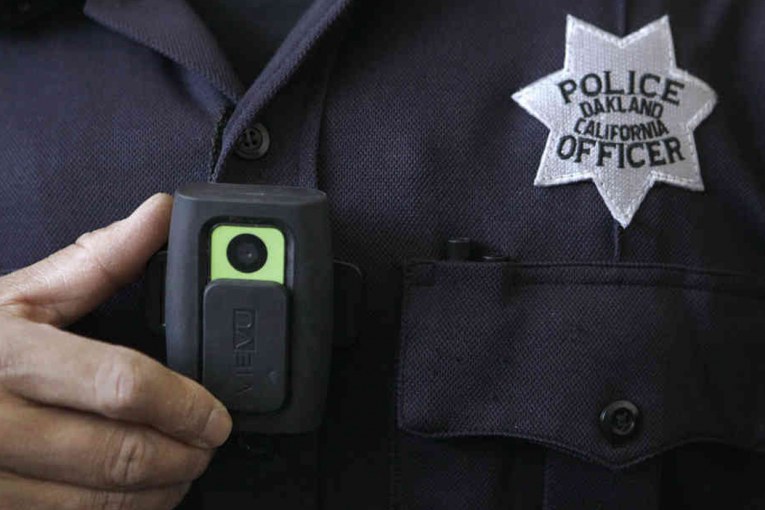

By Daphne Ho and Ramneet Singh
BROOKLYN, NY – Following release of the footage of the Tyre Nichols incident, a Brooklyn College professor charged in an opinion piece that body cameras and other police reforms are not effective enough—he also related it to the Paul Pelosi footage.
Alex Vitale is Professor of Sociology and Coordinator of the Policing and Social Justice Project at Brooklyn College and the CUNY Graduate Center, and author of The Ending of Policing.
On Jan. 27, the body-cam footage for two high-profile incidents were released to the public. These events include the assault of Paul Pelosi at his home and the murder of Tyre Nichols at the hands of multiple policemen.
“While we crave a hard truth about the nature of policing that will make us safer and hold police accountable, these videos have failed to reassure us on either front,” said Vitale, noting in his MSNBC opinion these releases fail to meet the demands for transparency that popularized body-cams in the first place.
In reference to Nichols’ death, Vitale charges, “In the end, the presence of body cameras did nothing to reduce the police use of violence. They did not save his life. It turns out that the hoped for value of deterrence just isn’t there in the ways we imagined.”
The author cites, “A systematic study of the introduction of body cameras in some neighborhoods in Washington, D.C., showed they made no measurable difference in any aspect of policing. But the city decided to give cameras to all officers anyway because police officers were using them for evidence collection.”
Vitale notes how conversations about the police are uniquely relevant in American culture. He asks readers to visualize the idealistic goals of the police, which are to protect the people from those who wish to do harm, often by any means necessary.
“America has a lurid fascination with police, who occupy a special place in the social imagination. At night, we watch fictionalized portrayals of police solving crimes and getting the bad guys, sometimes in ways that are violent, fall outside the law and shock our conscience,” he opines.
He talks about how a long history of police brutality has severed the trust between the authorities and several communities due to feelings of increased danger and scrutiny from officers, which conflicts with the notion that “safety” is their main concern.
Vitale considers the role of police-based reality shows as tools to shape public opinion on police work. Some of these reality shows depict the “exciting” aspects of the job with foot chases and flashy lights, which Vitale believes puts policework in a biased light.
The reality is much different, as many people have come to realize after the 2014 murders of several people of color, such as Michael Brown, Eric Garner, and Tamir Rice. These events increased the concern for accountability on the part of policemen, or as Vitale writes, a way to “finally lift the curtain.”
Lots of budgeting went into body camera technology, Vitale notes, and they are typically worn by police members who are on duty to interact with the public. Vitale adds some authorities are hopeful that these body cameras will be a tool to curb police abuse while also giving the public the truth they seek.
Body cameras on police were also meant to give less power to the narratives made by policemen, according to Vitale. However, he believes that body cameras are not as effective as desired.
“In the case of Nichols’ beating by Memphis police, the footage released is incomplete (as is often the case). The officers who made the initial stop were part of a now-disbanded plainclothes squad who didn’t wear body cameras. What we do see, however, is a litany of horrors. A young man in his car, who has not committed any crime, is set upon by officers based on their suspicions that something is amiss and ultimately beaten to death while being restrained,” writes Vitale.
Later in the article, Vitale cited a study looking at the impact of body cameras in deterring harmful police behaviors within certain areas of Washington, D.C., that found “no measurable difference.”
Referring to the body-cam footage from the Pelosi attack, Vitale discusses how the police only physically intervened “after the damage ha[d] been done,” and how this order of events could only be shown with the body-cam footage.
The MSNBC article cited above described how Memphis officials knew of the potential backlash of the “gruesome” footage release.
He noted the officers’ attempt to provide a reason for the situation on camera. He related this to a separate incident in Baltimore, where an officer claimed “he intentionally recorded the body-camera video to serve as a re-creation of a legitimate discovery of heroin that he had made in a similar manner — but failed to record — moments earlier.”
The judge did not believe this and sentenced him to “a three-year suspended sentence and two years of supervised probation,” with conditions on the second year of probation.
Moving back to the Nichols case, Lauren Sforza of The Hill wrote on Shelby County prosecutor Steven Mulroy’s discussion with CNN’s Wolf Blitzer where it was revealed there was “20 hours of unreleased footage.”
The same article notes that of the seven officers involved, five “were fired and are now facing second-degree murder charges.”
Overall, by the conclusion of the article, Vitale noted “we hide behind empty hopes that a little training, oversight and accountability will somehow transform an institution rooted in the use of violence to maintain systems of inequality.
“Body cameras are not going to save Americans…(the) truth is already out there in the long history of policing. From Ferguson to Minneapolis to Memphis, the demand on the streets is not for more technology for police; it is to dismantle policing and replace it with less harmful alternatives in as many ways as we possibly can,” said Vitale.
